News
Scubaverse Underwater Photographer Interview: Steve Jones

In an ongoing series, Scubaverse.com’s Underwater Photography Editors Nick and Caroline Robertson-Brown talk to underwater photographers from around the world that they admire.
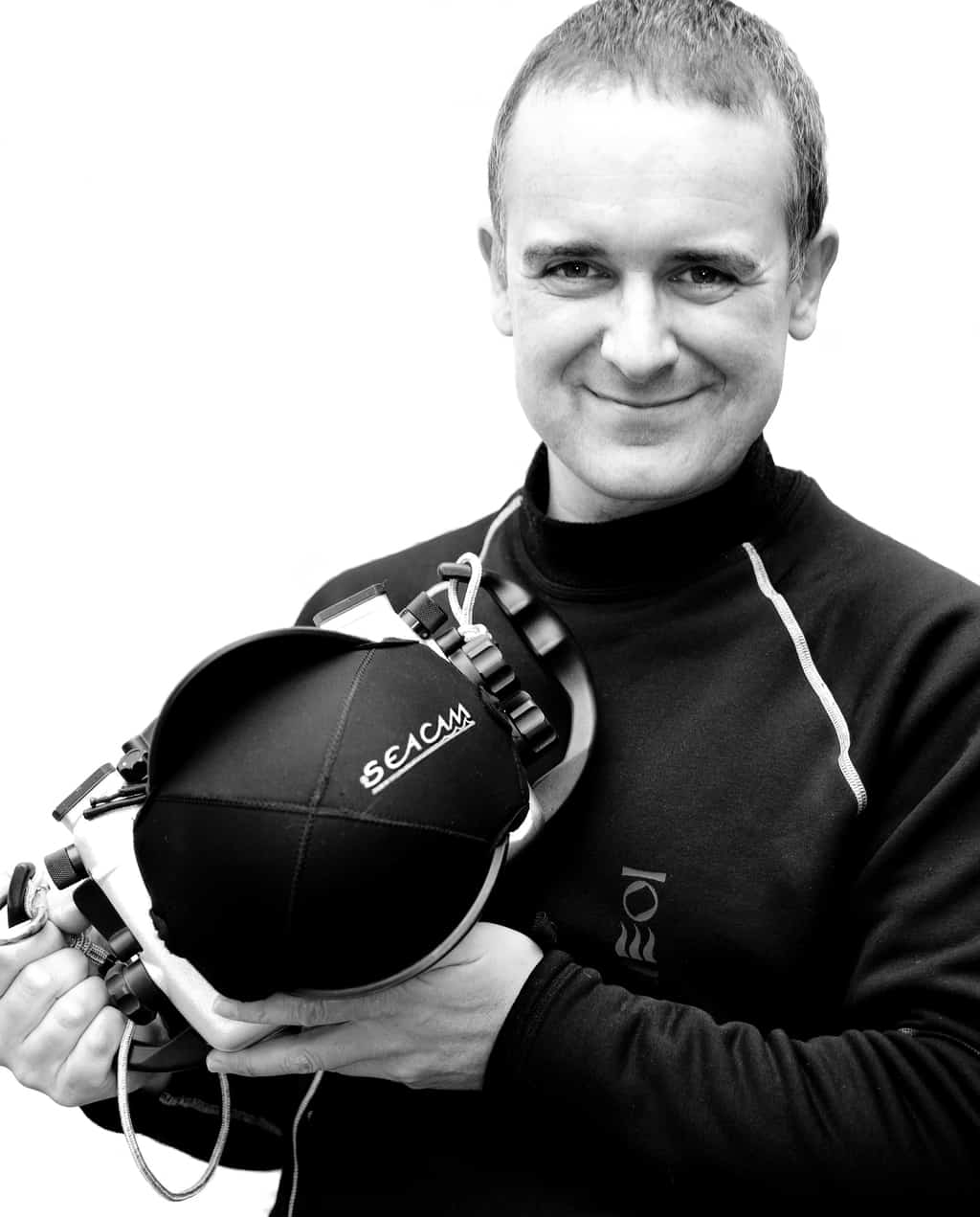 This interview is with Steve Jones.
This interview is with Steve Jones.
My professional diving career began in the early 1990’s when, immediately after university, I decided to take one year out to travel and work as a diving instructor. Seven years later, having lived and dived in Egypt, Malta, the Maldives and the Caribbean, I returned to live in the UK, somewhat reluctantly. By that time my imagery and articles were starting to appear in diving magazines, and since have gone on to be published in over 30 countries. Through photojournalism I’m very lucky to have been given the opportunity to visit places that I once only dreamed of and I’ve had to develop into an all-rounder as a photographer, equally happy writing about maritime history and photographing wrecks as I am when shooting equatorial seascapes awash with colour, or critters crawling through volcanic mud. This has led to quite a diverse portfolio and combined with my more specialist deep wreck photography led to me becoming a Blancpain Edition Fifty Fathoms photographer in 2015, one of four photographers invited annually to contribute to the fine art books produced by this high-end watchmaker. My website is at www.millionfish.com.
N/C: How did your underwater photography start?
SJ: I’ve had a fascination with both the natural world and photography since I was a child. I then learned to dive at the age of 14 but I couldn’t afford an underwater camera until I was working in the Red Sea as a diving Instructor back in 1992. I bought a second hand Nikonos III, and soon found myself assisting visiting professional photographers from whom I learned an enormous amount. It was in 1996 whilst working as an instructor/guide in the Maldives that I got my first break when German magazine Unterwasser published my images. I still regularly contribute to this excellent publication, over 20 years later
N/C: What is your favourite u/w camera equipment (past & present) & why?
SJ: I’ve used SEACAM housings since 1995 and they have never let me down. My favourite piece of kit is a SEACAM converted Nikon RS-UW 13mm fisheye lens. This was one of the original lenses designed for use on the Nikonos RS SLR, and is optimised for underwater use. SEACAM have adapted it for use on modern housed cameras. Its compactness and superb optical quality is particularly useful when technical diving on deep wrecks, where I often shoot at wide apertures due to low light conditions.
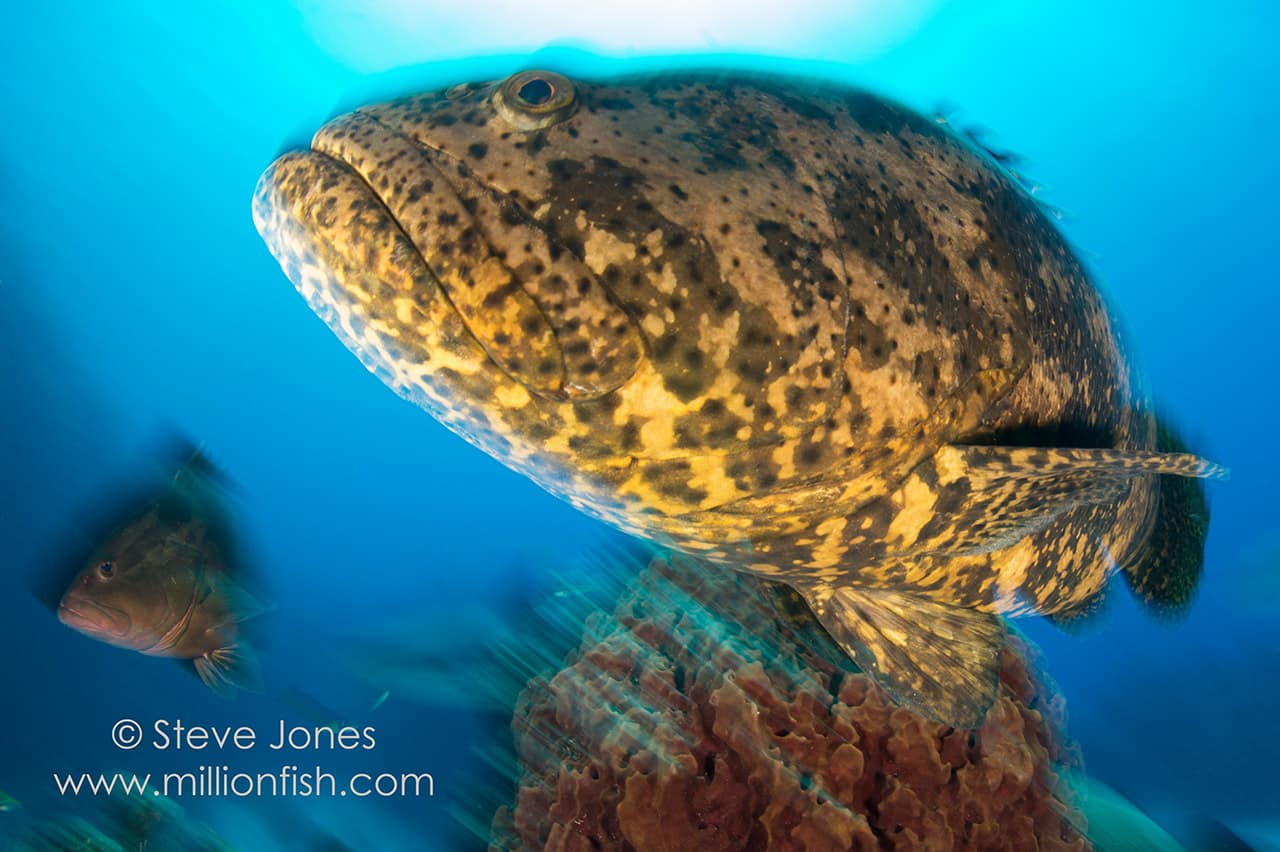
N/C: What would be your advice to anyone new to underwater photography?
SJ:
- Master your diving skills: have buoyancy control that is second to none.
- Build your technical knowledge, particularly your understanding of lighting and the influence of Aperture, Shutter Speed and ISO settings on underwater images, when used with/without strobes. Learn how to balance natural and strobe light as this is very important. Learn about editing and post processing with tools such as Lightroom.
- Study: Read books cover to cover, such as Martin Edge’s “The Underwater Photographer” and keep the kindle versions on hand to refer to whilst you’re on a trip.
- Observe: Immerse yourself in the photography of others and try and understand how the shot was taken and why it works (or not!)
- Practice constantly even on mundane subjects and also above water at every opportunity.
- Be creative and be different. Once you have mastered the basics, allow your own creative style to develop and flourish through your imagery to make it unique. Study composition techniques – there are many articles and books available written by topside and underwater photographers.
- Respect the environment and the oceans’ inhabitants, no matter how small they may be. Photography is a means to communicate the beauty and value of our marine world to those not fortunate enough to see it and as ambassadors for the ocean, our own code of conduct needs to be exemplary.
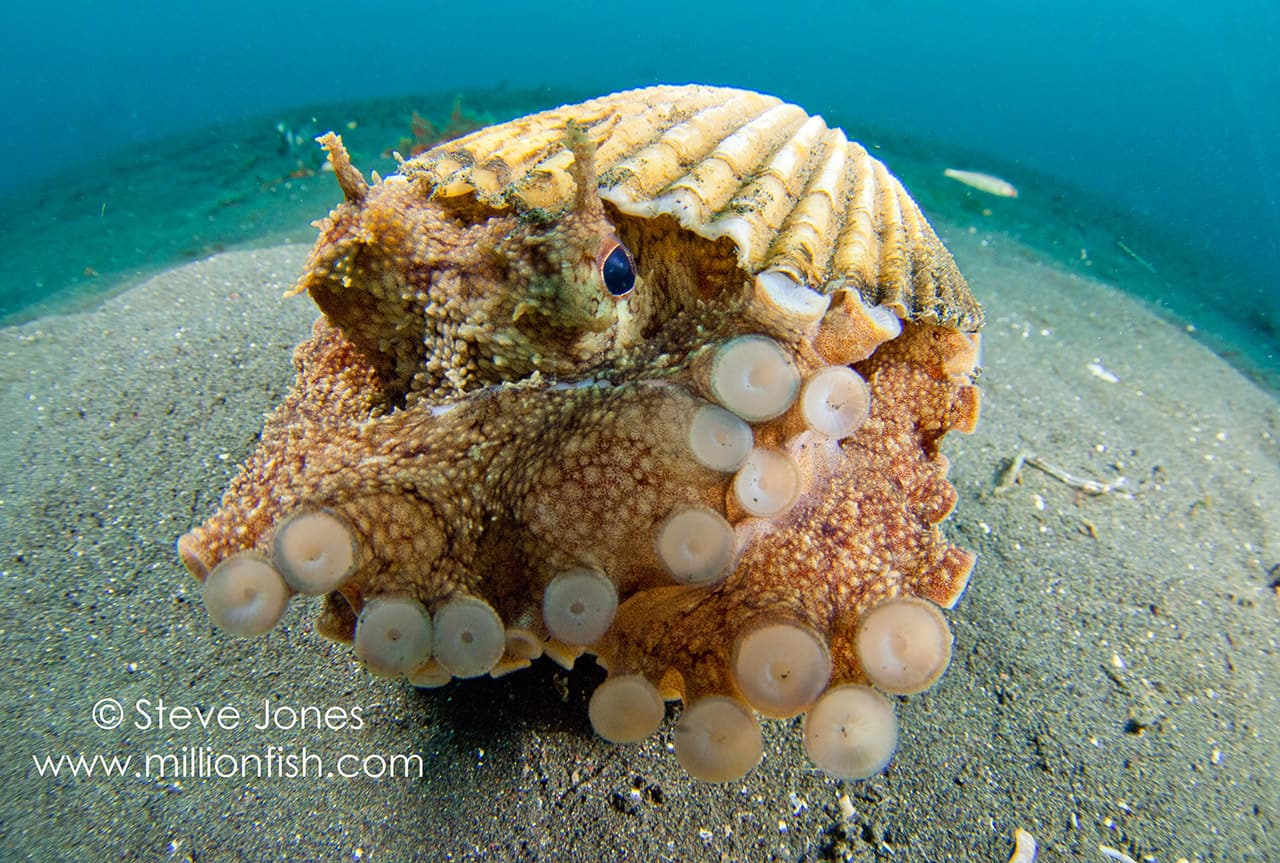
A Coconut Octopus (Amphioctopus marginatus), a species that gathers coconut and mollusc shells for shelter, Lembeh Strait, Sulawesi, Indonesia
N/C: What, or who, has been your single biggest inspiration for your underwater photography?
SJ: My biggest inspiration is my fascination with the marine world and the exploration of it. I try and create images that take the viewers imagination to the place where I took the image, to generate some of the excitement that I felt when I was there. As for photographers who’ve inspired me, David Doubilet had been my inspiration from the start, and I also admire the work of many other photographers: The ones pushing creative boundaries to capture familiar subjects in new ways and the ones pushing physical boundaries, operating in environments where previously un-photographed subjects are found. There are too many to mention here.
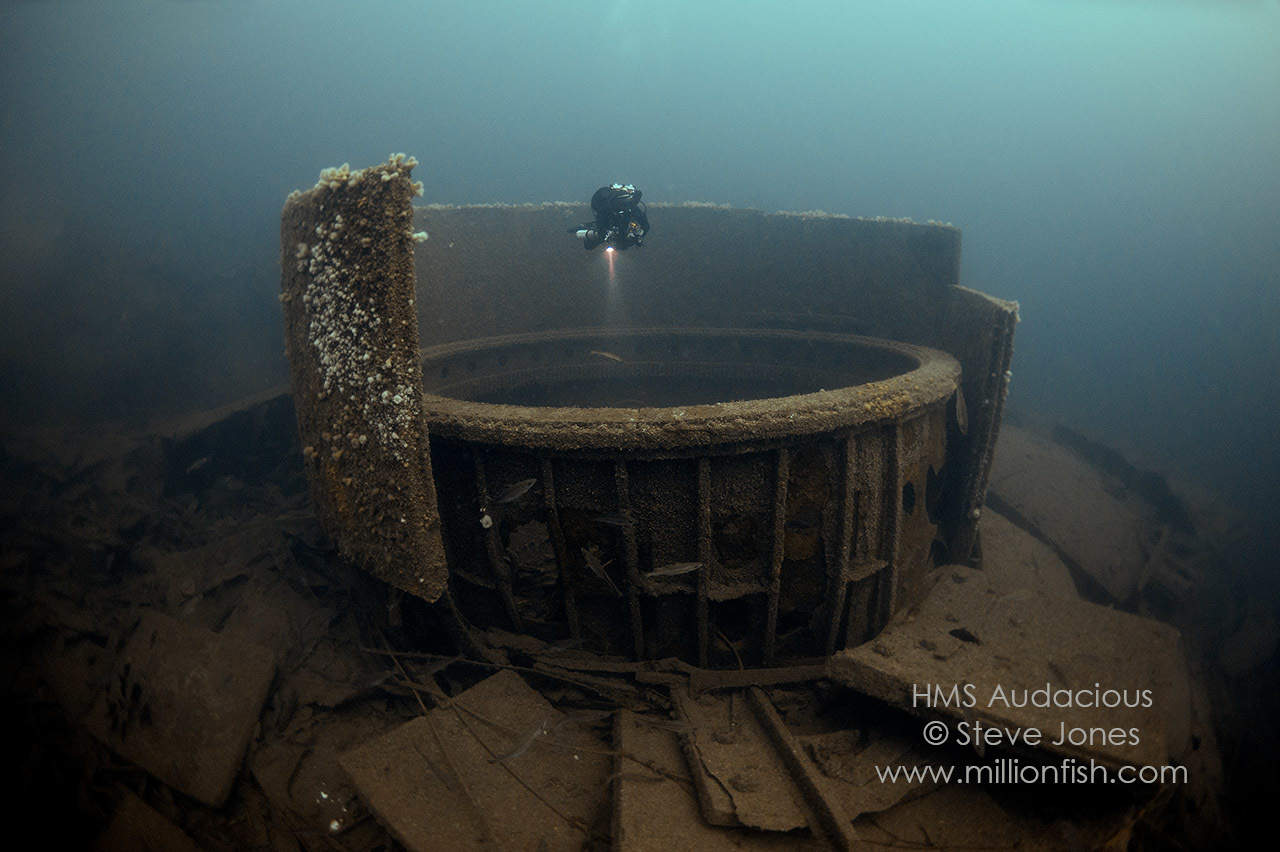
The armoured barbette that housed one of the 5 main gun turrets of HMS Audacious, the first
British battleship to be sunk in WW1
N/C: What image are you most proud of and why?
SJ: It’s actually an image set rather than one image, and that would be of the deep wrecks lying off Malin Head in Ireland. I’d been practicing my techniques for shooting with natural light in deep water for several years, as I like to show the wrecks in their true scale. These wrecks mainly lie between 60 and 70 metres and we only had one dive on each of the most iconic ones. With great team work from my regular dive partner Steve Henshall, we got a set that I was immensely proud of, and it directly led to me being selected as one of the Blancpain Edition Fifty Fathoms photographers.
N/C: Where is your favourite dive location, and is it for the photography?
SJ: I’ve just returned from Cocos and it blew my mind. The diving is simply the best I’ve ever done and I want to go back. For sheer diversity, I love Indonesia and Papua New Guinea. My bucket list is still quite long though…..
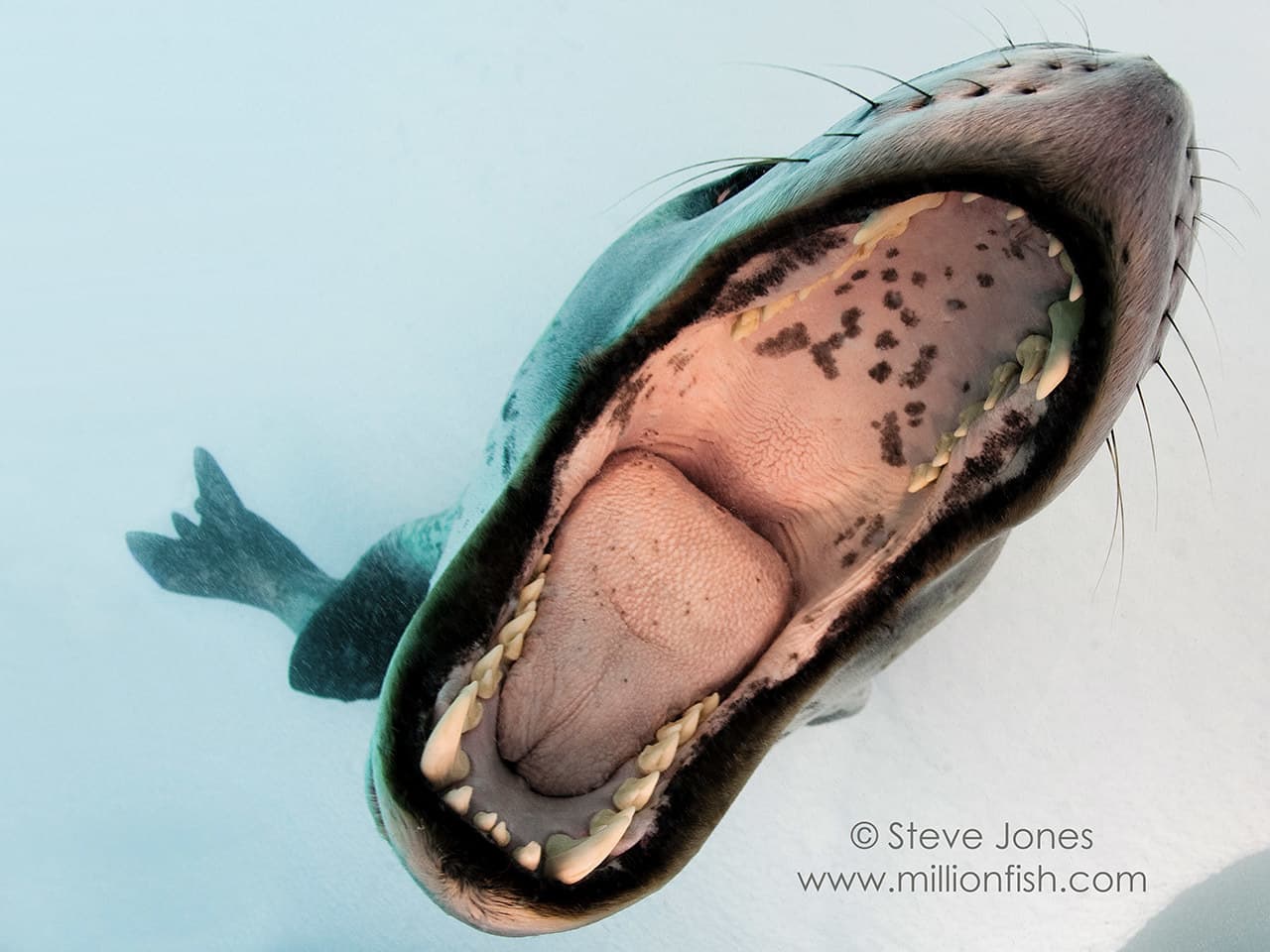
Leopard seal, mouthing its own reflection in the camera port (Hydrurga leptonyx), Astrolabe Island, Antarctica
N/C: What are you views on marine life manipulation, moving subjects?
SJ: Moving and harassing animals sets a disturbing precedent and I firmly believe it goes against the code of conduct that nature photographers should abide by: The animal’s welfare must always come first. However, we need to also keep things in perspective and hold an awareness of all things that impact the marine environment: unsustainable fishing and plastic waste being two of the major ones. At the end of the day it’s all about the ethics you abide by as a marine photographer.
N/C: What do you look for when you are making your images?
SJ: Most of my imagery is captured when on direct assignments for magazines. So first I have to get the “safety” shots in the bag – this is the basic set of publishable quality images that will allow a story to be illustrated and I don’t relax until I have a reasonably good set. Once that objective is met, I let my creativity off the leash and take higher risk shots using less conventional, often experimental techniques and equipment. Overall, I try and capture images that support the subject matter of my story as it makes my writing task much easier if my images are already speaking the words.
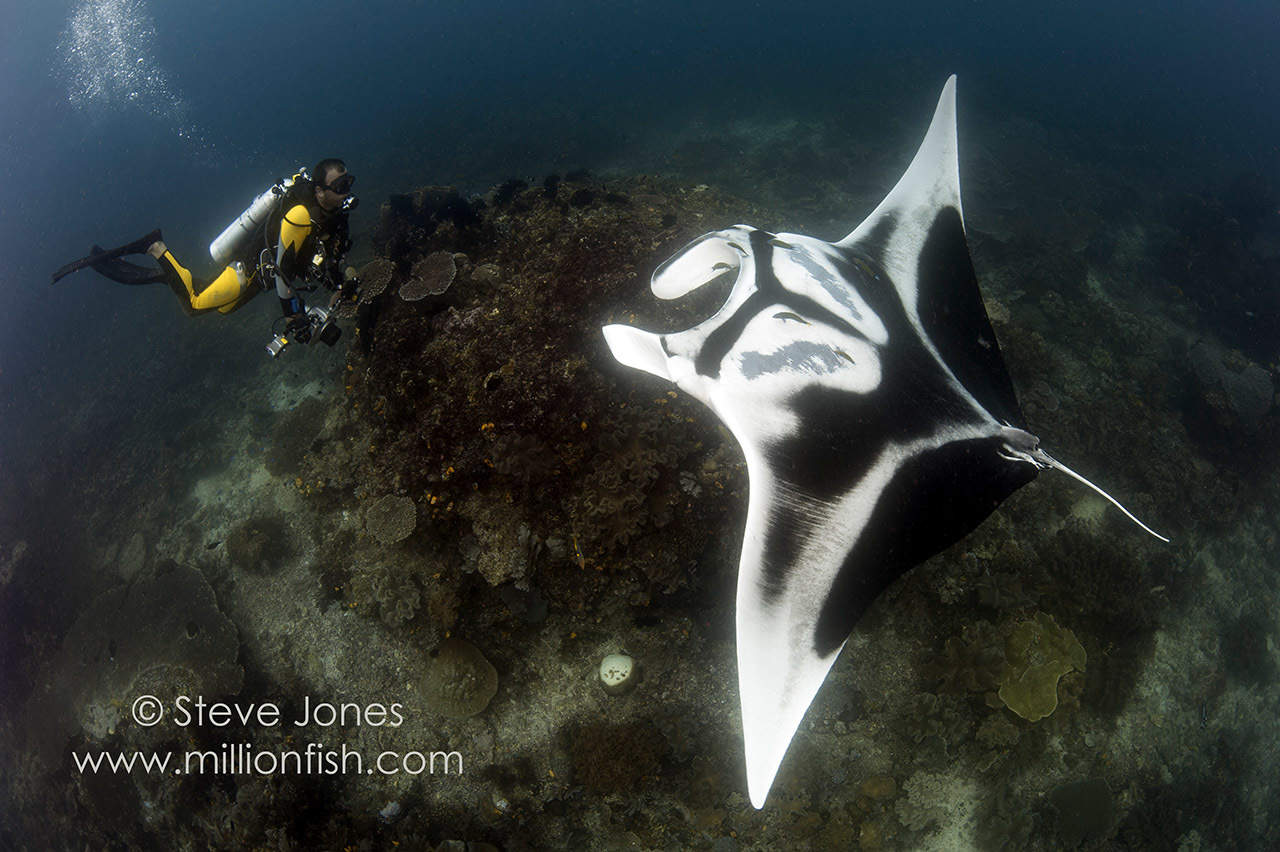
A diver has a very close encounter with a giant oceanic manta ray (Manta birostris), Dampier Strait, Raja Ampat, West Papua, Indonesia
N/C: What motivates you to take u/w photos?
SJ: It’s a creative outlet, a representation of my fascination with wildlife and exploration of the marine world. With wrecks, it is also capturing history: A unique moment in time. At some point in the future, our images will be all that remains of many of the wrecks we now dive. I sincerely hope that the same will not apply to the wonderful marine life we encounter, but it will unless we change our short-term exploitation of this planets limited resources and start thinking more in terms of leaving a home that’s fit for our children to inhabit.
N/C: If you could photograph any one thing/place what or where would that be?
SJ: That would be the Great Whales, a lifelong dream as yet unfulfilled! (They are on my bucket list!)
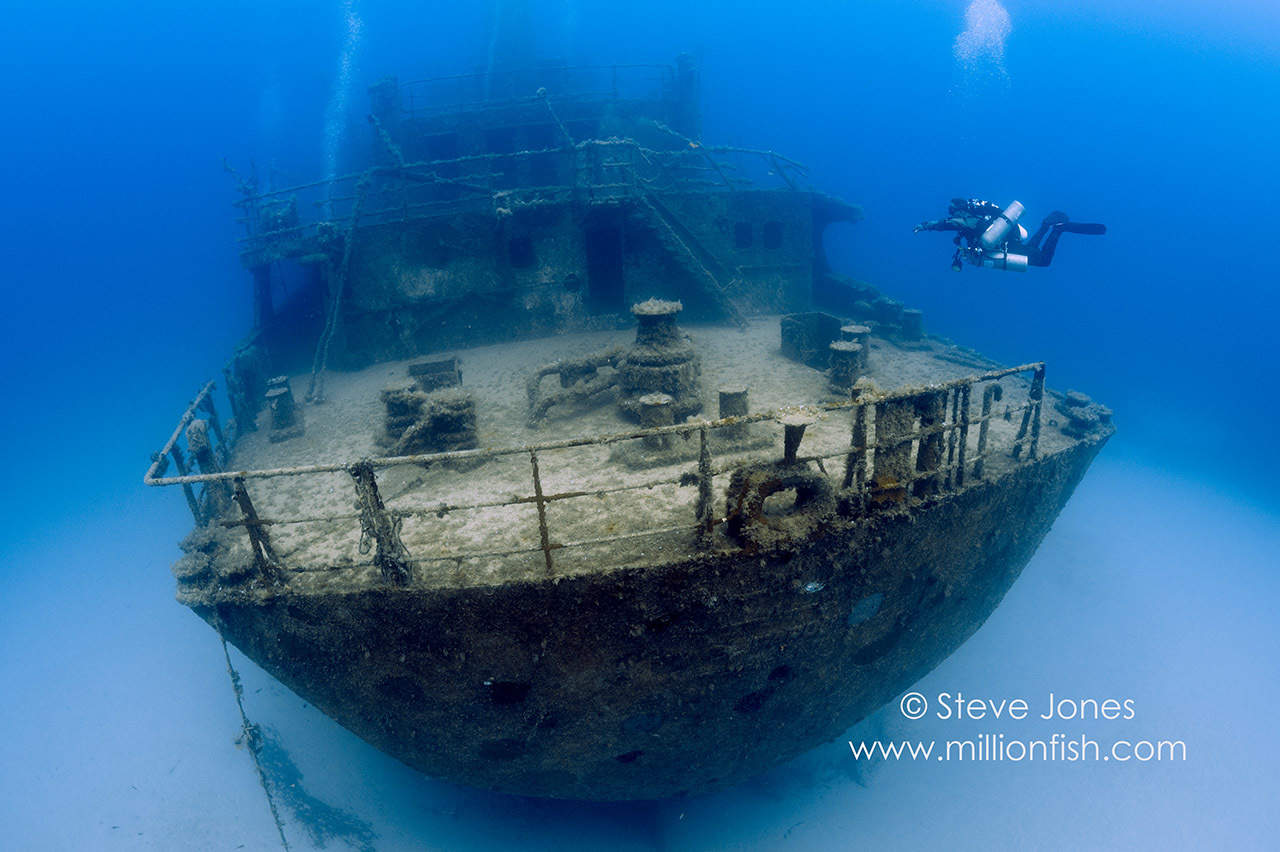
The wreck of the Um El Faroud, Malta.
Gear News
Introducing the TR-80, IR-50 and CS-30 Regulators from DYNAMICNORD

Whether you are a beginner or a professional diver – with the three new main regulators from DYNAMICNORD, everyone will find their favourite regulator. They all look super stylish.
Excellent performance with the TR-80
Quality and performance are the be-all and end-all for regulators. It is not for nothing that the TR stands for Tec Reg. The innovative design of the TR-80 guarantees absolute reliability – even in ice-cold waters.

Perfect breathing effort at 0.8 J/l / certified for diving in waters below 10 degrees / structural design made of solid brass for best cold protection / membrane-compensated design with dry seal of the first stage / reduced exhalation effort thanks to optimized exhalation membrane and bubble deflector / adjustable Venturi (dive/predive) and adjustment knob for individual inhalation comfort / innovative design of the front cover prevents free-flow in strong currents or when diving with scooters / design made of sandblasted brass, matt chrome finish / 2 HP and 4 LP outlets / mouthpiece made of high-quality, anti-allergic silicone for maximum comfort.


Amazing underwater adventures with the IR-50
The IR-50 is the top regulator for advanced and experienced divers. Natural breathing is the essence of this regulator.

Ideal breathing effort at 0.8 J/l /certified for diving in waters below 10 degrees / compensated membrane / adjustable venturi (dive/predive) and adjustment knob for individual inhalation comfort/ outlet valve and deflector for minimum exhalation effort and reduction of bubbles on the face / design made of sandblasted brass, matt chrome finish / 2 HP and 4 NP outlets / mouthpiece made of high-quality, anti-allergic silicone for maximum comfort.


The Workhorse – our CS-30
For diving centres and diving beginners – the workhorse stands for strong construction, reliability and robustness. Perfect for your training.

Optimal breathing effort at 0.8 J/l /recommended for diving in waters above 10 degrees / non-compensated piston / adjustable venturi (dive/predive) / outlet valve and deflector for minimum exhalation effort and reduction of bubbles on the face / design made of sandblasted brass, matt chrome finish / 1 HP and 3 NP outlets / mouthpiece made of high-quality, anti-allergic silicone for maximum comfort.


Octopus OP-30
The OP-30 is the ideal addition to all DYNAMICNORD regulators. It is identical in construction to the CS-30.

The TR-80, IR-50, CS-30 (DIN & INT) regulators and the Octopus OP-30 are available from DYNAMICNORD dealers and in the online store.
DYNAMICNORD – Your Outdoor Companion.
Marine Life & Conservation
Paul Watson Released as Denmark Blocks Japan’s Extradition Bid

Renowned anti-whaling activist Paul Watson has been released from custody in Greenland after spending five months in detention. Denmark’s Justice Ministry rejected Japan’s request for his extradition, citing insufficient guarantees that his time already served in custody would be credited against any potential sentence.
The 74-year-old Canadian-American was arrested on July 21 in Nuuk, Greenland’s capital, when his ship docked to refuel. His arrest was based on a 2012 Japanese warrant related to a 2010 encounter in Antarctic waters. Japan alleged Watson obstructed operations and caused damage to a whaling research ship during efforts to disrupt illegal whaling. Watson has consistently denied these claims, maintaining his commitment to marine conservation.
Denmark, which oversees extradition matters for Greenland, concluded that while the legal conditions for extradition were met, the lack of assurances from Japan regarding time-served credit made extradition untenable.
In a video shared by his foundation, Watson expressed gratitude and relief, saying, “After five months, it’s good to be out… and good to know they’re not sending me to Japan.” He added that the most difficult part of his time in custody was being separated from his two young sons.
Watson is a pioneering figure in marine conservation, known for founding the Captain Paul Watson Foundation in 2022 after decades of activism with the Sea Shepherd Conservation Society. His bold efforts to defend marine life have earned him widespread support, including from celebrities and conservationists. His work has also been featured in the acclaimed reality TV series Whale Wars.
Watson’s lawyer, Jonas Christoffersen, praised the decision, stating, “We are happy and relieved that Paul Watson is now free.” He added that Watson is eager to reunite with his family and continue his vital work.
The arrest occurred while Watson’s vessel, the M/Y John Paul DeJoria, was en route to the North Pacific with a team of 26 volunteers to intercept a Japanese whaling ship. His foundation described the arrest as politically motivated and emphasized that Watson’s actions were focused on ending illegal whaling practices.
Japan resumed commercial whaling in 2019 after leaving the International Whaling Commission, asserting that whale meat is a cultural tradition. Conservationists, however, continue to challenge these practices, highlighting their impact on marine ecosystems.
Despite the challenges, Watson remains steadfast in his mission to protect marine life and bring attention to whaling practices. His dedication to ocean conservation has made him a globally respected advocate for the environment.
-

 News2 months ago
News2 months agoIconic SS United States to become the World’s Largest Artificial Reef
-

 News3 months ago
News3 months agoBook Review – 52 Assignments: Underwater Photography
-

 Gear News3 months ago
Gear News3 months agoDYNAMICNORD – New German diving brand enters the British market
-

 News3 months ago
News3 months agoExploring Cenote El Pit: A Diver’s Dream
-

 Gear News3 months ago
Gear News3 months agoTry BARE drysuits (and maybe even win one!) this Friday with Sea & Sea at North West Dive Fest
-

 Marine Life & Conservation3 months ago
Marine Life & Conservation3 months agoBook Review: Coral Triangle Cameos
-

 Blogs2 months ago
Blogs2 months agoDive the Egyptian Red Sea this Autumn with Regaldive
-

 News3 months ago
News3 months ago2024 Ocean Art Underwater Photo Competition Announced















